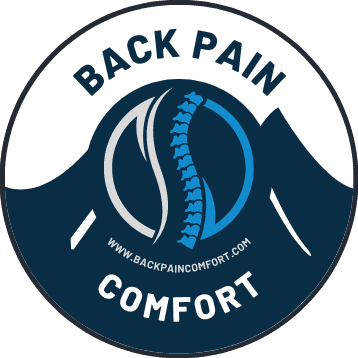
Have you ever experienced an electric shock-like pain starting from your lower back and shooting down one leg? Or perhaps a persistent ache that won’t seem to go away, making it uncomfortable to sit, stand, or even sleep? If so, you might be familiar with sciatica, a common culprit behind many cases of back and leg pain. In this article, we’ll delve deep into the world of sciatica to help you understand its causes, symptoms, and potential treatment options.
What is Sciatica?
Sciatica refers to the pain caused by irritation or compression of the sciatic nerve – the longest nerve in the human body. This nerve starts in the lower back and travels through the buttocks and down the back of each leg, making it responsible for connecting the spinal cord to the leg and foot muscles. When this nerve gets pinched or irritated, it can cause pain, numbness, and even muscle weakness in the affected areas.
What Causes Sciatica?
Several factors can lead to the onset of sciatica:
- Herniated or Slipped Disc: The most common cause is a herniated or slipped disc. The discs act like cushions between the bones (vertebrae) in your spine. If a disc gets damaged, it can bulge or break open, pressing on the sciatic nerve.
- Spinal Stenosis: This refers to the narrowing of the spinal canal, which can compress the spinal cord and sciatic nerve.
- Spondylolisthesis: A condition where a vertebra slips forward over another one.
- Piriformis Syndrome: The piriformis muscle, located deep in the buttock, can sometimes irritate or pinch the sciatic nerve.
- Tumors or Infections: In rare cases, infections or tumors can lead to sciatic nerve compression.
- Pregnancy: The added weight and pressure during pregnancy can also put extra stress on the sciatic nerve.
Recognizing the Symptoms
Sciatica typically affects only one side of the body and the pain can vary widely. Some common symptoms include:
- A sharp pain that makes it difficult to stand or walk.
- Burning or tingling down the leg.
- Numbness, weakness, or difficulty moving the leg or foot.
- A constant pain on one side of the rear.
It’s important to note that not everyone with sciatica will experience all these symptoms, and the intensity can range from mild to severe.

Treatment Options
Thankfully, many people find relief from sciatica through various treatment methods:
- Self-Care Measures: Often, sciatica can improve with rest, ice or heat, over-the-counter pain relievers, and gentle exercises.
- Physical Therapy: A physical therapist can offer exercises and stretches to improve your spinal alignment and posture, strengthening the muscles that support your back.
- Medications: Depending on the pain’s severity, doctors might prescribe anti-inflammatories, muscle relaxants, or even narcotics.
- Injections: Some people benefit from corticosteroid injections, which can reduce inflammation around the nerve.
- Surgery: In severe cases, when the pain doesn’t improve with other treatments, surgery might be considered to rectify the root cause of the sciatica.
Lifestyle and Prevention
While some factors leading to sciatica, like degenerative conditions or accidents, might be out of our control, there are preventive measures that can be adopted to minimize the risk:
- Regular Exercise: Incorporating activities that strengthen the back muscles can help support the spine, making disc issues less likely.
- Ergonomics: Ensure your work and home environments are spine-friendly. This means using chairs that support the natural curve of your spine, keeping your feet flat on the floor, and using a cushion behind your lower back.
- Mindful Movement: When lifting heavy objects, always bend at the knees and use your leg muscles, keeping the object close to your body. Avoid twisting your spine.
- Healthy Weight: Maintaining a weight that’s healthy for your body type can reduce the strain on your spine.
Alternative Therapies
For those seeking non-conventional methods, there are alternative treatments that some individuals find beneficial:
- Acupuncture: This ancient Chinese method uses thin needles to stimulate specific points on the body, potentially offering relief from sciatic pain.
- Chiropractic Adjustments: Some find relief with spinal adjustments done by trained chiropractors.
- Massage: Deep tissue massage can help relieve the muscle spasms that sometimes accompany sciatica.

Conclusion
Sciatica, while common, can be an incredibly discomforting condition that affects various facets of one’s daily life. Understanding its origins, symptoms, and potential treatments is crucial for anyone suffering from this type of pain. If you suspect you have sciatica or are experiencing symptoms, always consult a healthcare professional. They can provide a proper diagnosis and guide you towards the most suitable treatment. Remember, knowledge is power – the more you know about your body and the challenges it faces, the better equipped you’ll be to seek relief and reclaim your life.






